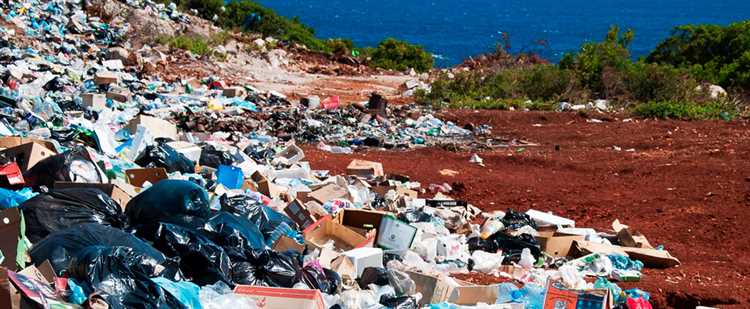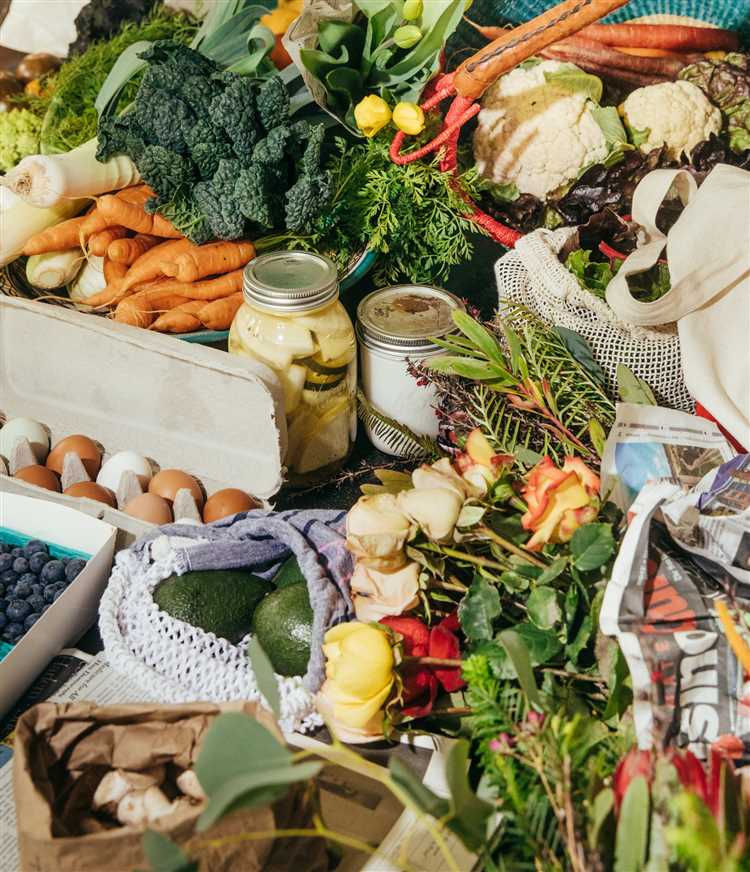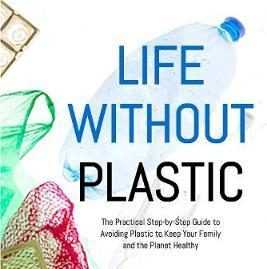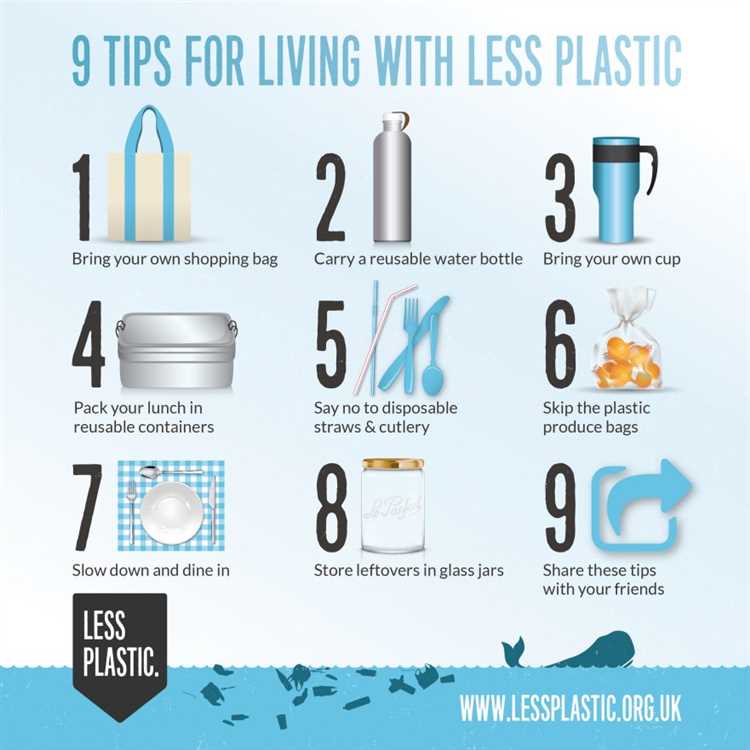
Plastic pollution has become a major global issue, with devastating effects on our environment and health. As plastic waste continues to accumulate in landfills and oceans, many individuals are now seeking to lead a plastic-free lifestyle. But is such a challenge even possible in today’s world?
The convenience and ubiquity of plastic in our daily lives make it difficult to imagine a plastic-free existence. From food packaging to household items, plastic has ingrained itself into every aspect of our modern society. However, it is crucial to recognize the detrimental impact this material has on our planet.
Living plastic-free may seem daunting at first, but it is not an insurmountable task. With a combination of conscious consumer choices, innovative alternatives, and collective action, it is possible to reduce our plastic footprint and create a more sustainable future.
Conscious consumer choices play a vital role in the quest for a plastic-free lifestyle. This means actively seeking out products and packaging that are plastic-free or made from sustainable materials. By supporting businesses that prioritize eco-consciousness, we can send a strong message to industries that it is time to change their plastic-dependent practices.
- Reducing Plastic Waste: Small Steps Make a Big Difference
- The Impact of Plastic on Our Oceans and Wildlife
- Shopping Sustainably: Alternatives to Plastic Packaging
- 1. Bring Your Own Bags
- 2. Choose Products with Minimal Packaging
- The Role of Government and Industries in Tackling Plastic Pollution
- Government Regulations
- Industry Innovation
- Collaboration
- Plastic-Free Living: Tips and Tricks for a Sustainable Lifestyle
- 1. Bring Your Own Bag
- 2. Say No to Single-Use Plastics
- 3. Shop in Bulk
- 4. Choose Plastic-Free Personal Care Products
- 5. Compost Food Waste
- 6. Support Plastic-Free Restaurants and Businesses
- Joining the Movement: How Individuals Can Make a Change
- FAQ:
- What is the impact of plastic on the environment?
- Is living plastic-free really possible?
- What are some alternatives to plastic products?
- How can individuals make a difference in reducing plastic waste?
Reducing Plastic Waste: Small Steps Make a Big Difference
Plastic waste is a major environmental concern, with millions of tons of plastic ending up in our oceans and landfills each year. While the problem may seem overwhelming, every small step towards reducing plastic waste can make a big difference.
One simple way to start reducing plastic waste is by using reusable shopping bags instead of single-use plastic bags. Many stores now offer affordable and durable reusable bags that can be easily carried and used multiple times. By opting for reusable bags, you can significantly reduce the amount of plastic waste generated from your shopping trips.
Another easy step to reduce plastic waste is by choosing products with minimal or no plastic packaging. Look for items that are sold in glass, paper, or metal containers instead of plastic. Additionally, buying in bulk can help reduce packaging waste, as you can often find items like grains, nuts, and cleaning products in bulk bins where you can bring your own containers.
Avoiding single-use plastics, such as plastic straws and water bottles, can also have a significant impact on reducing plastic waste. Invest in a reusable water bottle and carry it with you wherever you go. If you need to use a straw, opt for alternatives like paper, metal, or bamboo straws. These small changes can help reduce the demand for single-use plastics and encourage others to do the same.
Furthermore, recycling is an essential part of reducing plastic waste. Make sure to sort your recyclables properly and educate yourself on what can and cannot be recycled in your area. Many communities also have recycling programs for plastic bags and other plastic film, so be sure to take advantage of these resources.
Educating others about the importance of reducing plastic waste is another crucial step. Spread the word about the impact of plastic pollution and share information on social media or through community events. By raising awareness, you can inspire others to take action and contribute to the collective effort of reducing plastic waste.
In conclusion, reducing plastic waste is possible with small, everyday actions. By using reusable bags, choosing products with minimal packaging, avoiding single-use plastics, recycling properly, and educating others, we can make a significant difference in combating plastic pollution and creating a cleaner, healthier environment for future generations.
The Impact of Plastic on Our Oceans and Wildlife
Plastic pollution is a growing concern that is having a significant impact on our oceans and wildlife. Each year, millions of tons of plastic waste end up in our oceans, causing serious harm to marine ecosystems and the creatures that inhabit them.
Plastics are not biodegradable and can take hundreds of years to break down into smaller pieces, known as microplastics. These microplastics are now found throughout the oceans, from the surface to the deep sea, and are ingested by marine animals such as fish, turtles, seabirds, and whales.
When marine animals consume plastic, it can lead to serious health problems and even death. The plastic can block their digestive systems, causing starvation or suffocation. It can also leach toxic chemicals into their bodies, which can disrupt their reproductive systems and overall health.
In addition to the direct harm caused by plastic ingestion, marine animals can also become entangled in plastic debris such as fishing nets, ropes, and plastic bags. This can lead to injuries, amputations, and even death. Many animals, including dolphins, seals, and sea turtles, often mistake plastic bags for jellyfish, which they then consume and suffer dire consequences.
Furthermore, plastics not only harm marine animals but also impact entire marine ecosystems. Coral reefs, for example, are highly sensitive to changes in their environment, and plastic pollution poses a serious threat to their survival. The chemical properties of plastic can contaminate the water, affecting the growth and health of coral reefs and the other organisms that rely on them.
| Impacts of Plastic on Oceans and Wildlife: | Solutions to Reduce Plastic Pollution: |
|---|---|
| – Ingestion by marine animals | – Reduce single-use plastics |
| – Entanglement of marine animals | – Encourage recycling and reuse |
| – Disruption of reproductive systems | – Support legislation to reduce plastic waste |
| – Pollution of water and coral reefs | – Promote education and awareness |
In order to protect our oceans and wildlife from plastic pollution, it is crucial that we take action to reduce our plastic consumption and improve waste management practices. By adopting sustainable alternatives, supporting recycling initiatives, and advocating for stricter regulations, we can make a positive impact and ensure a healthier future for our planet and its ecosystems.
Shopping Sustainably: Alternatives to Plastic Packaging
When it comes to shopping sustainably, one of the biggest challenges is avoiding plastic packaging. Plastic is a major contributor to pollution and harm to marine life, so finding alternative options is crucial.
1. Bring Your Own Bags
One simple but effective way to reduce plastic waste is to bring your own reusable bags when shopping. Invest in sturdy, eco-friendly bags made from natural materials such as cotton or jute. Keep them in your car, purse, or backpack, so you are always prepared.
2. Choose Products with Minimal Packaging

Look for products that have minimal or no packaging. Opt for loose fruits and vegetables instead of pre-packaged ones. Buy items in bulk, which often have less packaging compared to individually wrapped products. When shopping for personal care items or household goods, choose brands that use eco-friendly packaging materials such as glass or cardboard.
Another way to reduce packaging waste is to avoid single-use items. Switch from buying single-use water bottles to carrying a reusable water bottle. Replace plastic food storage bags with reusable silicone bags or beeswax wraps. These small changes can make a big difference.
Remember to prioritize products that are packaged in recyclable materials or that use innovative, sustainable packaging solutions.
Overall, shopping sustainably requires conscious decision-making. By choosing alternatives to plastic packaging and supporting brands that prioritize sustainability, we can all contribute to a greener future.
The Role of Government and Industries in Tackling Plastic Pollution

In order to achieve a plastic-free future, it is imperative that both governments and industries play a major role in tackling plastic pollution. Governments have the power to implement and enforce regulations, while industries have the ability to innovate and create sustainable alternatives.
Government Regulations
Government regulations are crucial in reducing plastic pollution. By implementing policies that ban or restrict the use of single-use plastics, governments can significantly decrease the amount of plastic waste entering our environment. For example, they can impose taxes on plastic products or offer incentives for companies to reduce their plastic usage.
Furthermore, governments can also invest in waste management infrastructure and recycling programs. By providing the necessary resources and support, governments can ensure that plastic waste is properly collected, sorted, and recycled. They can also encourage research and development into new recycling technologies that can handle more types of plastic, making recycling more effective and efficient.
Industry Innovation
Industries are responsible for creating and producing plastic products, therefore, they have a critical role in addressing plastic pollution. By investing in research and development, industries can create sustainable alternatives to single-use plastics. For example, they can develop packaging made from biodegradable materials or reusable containers.
In addition, industries can also embrace the concept of the circular economy. This involves designing products with recycling and reusing in mind, as well as integrating recycled materials into new products. By adopting such practices, industries can reduce their reliance on virgin plastics and contribute to the reduction of plastic waste.
Collaboration

Collaboration between governments and industries is key to combatting plastic pollution effectively. By working together, they can develop comprehensive strategies and initiatives that address the entire lifecycle of plastic products. This can involve setting targets for reducing plastic waste, promoting sustainable practices, and sharing knowledge and best practices.
Furthermore, governments can provide incentives and support to industries that are actively working towards reducing plastic pollution. This can help drive innovation and encourage more companies to take action. By creating a collaborative environment, both governments and industries can make significant progress in tackling plastic pollution.
In conclusion, the role of both governments and industries is crucial in tackling plastic pollution. Governments can implement regulations and invest in waste management infrastructure, while industries can innovate and create sustainable alternatives. By collaborating and working together, they can make a significant impact in reducing plastic pollution and creating a more sustainable future.
Plastic-Free Living: Tips and Tricks for a Sustainable Lifestyle
If you’re looking to reduce waste and live a more sustainable lifestyle, eliminating plastic from your daily routine is a great place to start. Plastic pollution is a global crisis, with millions of tons of plastic waste ending up in our oceans and landfills each year. By making small changes to our habits, we can help reduce the demand for plastic and lessen its impact on the environment. Here are some tips and tricks to help you live a plastic-free life:
1. Bring Your Own Bag
One of the easiest ways to reduce plastic waste is by bringing your own reusable bag when you go shopping. Whether you’re grocery shopping or running errands, having a reusable bag handy will help you avoid the need for plastic bags.
2. Say No to Single-Use Plastics
Avoid using single-use plastics such as straws, disposable cutlery, and water bottles. Instead, opt for reusable alternatives like metal straws, bamboo cutlery, and stainless steel water bottles. By making this simple switch, you can significantly reduce your plastic waste.
3. Shop in Bulk
Buying products in bulk reduces the need for excessive plastic packaging. Look for stores that offer bulk bins for items like grains, nuts, and spices. Bring your own reusable containers and bags to fill up on these items, eliminating the need for plastic packaging.
4. Choose Plastic-Free Personal Care Products
Many personal care products, such as shampoo, soap, and toothpaste, come packaged in plastic bottles or tubes. Look for plastic-free alternatives such as bar soap, shampoo bars, and toothpaste tablets. These products are not only better for the environment but also for your health.
5. Compost Food Waste
Food waste that ends up in landfills can produce methane, a potent greenhouse gas. Instead of throwing your food waste in the trash, start a compost bin or find a local composting facility. Composting not only reduces greenhouse gas emissions but also helps nourish the soil.
6. Support Plastic-Free Restaurants and Businesses
When dining out or shopping, choose restaurants and businesses that are committed to reducing their plastic use. Many establishments now offer alternatives to plastic straws, cutlery, and take-out containers. By supporting these businesses, you’re encouraging others to make the switch to plastic-free alternatives.
Living a plastic-free lifestyle may require some adjustments at first, but the impact on the environment is worth it. By reducing our consumption of plastic, we can protect our oceans, wildlife, and future generations. Start implementing these tips and tricks today and inspire others to do the same!
Joining the Movement: How Individuals Can Make a Change
In order to live a plastic-free lifestyle, it is important for individuals to become aware of the impact that plastic has on the environment and the steps they can take to reduce their plastic consumption.
Here are some ways individuals can make a change:
- Refusing single-use plastic: This includes items such as plastic bags, straws, and disposable cutlery. Instead, individuals can opt for reusable alternatives like cloth bags, metal or bamboo straws, and reusable cutlery.
- Using refillable water bottles: Instead of buying plastic water bottles, individuals can carry their own refillable water bottles. This reduces the need for single-use plastic and helps to minimize plastic waste.
- Choosing plastic-free alternatives: Individuals can look for products that come in plastic-free packaging, such as shampoo bars, solid soap, and bamboo toothbrushes. By opting for these alternatives, individuals can reduce their plastic footprint.
- Supporting local businesses: Individuals can choose to support local businesses that offer plastic-free options. This can include shopping at farmers markets or bulk stores that allow individuals to bring their own containers for packaging.
- Spreading awareness: Individuals can educate their friends, family, and community about the benefits of living plastic-free. By sharing information and encouraging others to make small changes, individuals can help create a larger impact.
By adopting these practices, individuals can contribute to the movement towards a plastic-free future. Every small step makes a difference, and together, we can reduce our reliance on plastic and create a healthier planet for future generations.
FAQ:
What is the impact of plastic on the environment?
Plastic has a devastating impact on the environment. It takes hundreds of years to break down, and during that time it can release toxic chemicals and harm wildlife. Plastic pollution is a major contributor to the destruction of ecosystems, including oceans and landfills.
Is living plastic-free really possible?
Living completely plastic-free is extremely challenging, but it is possible to significantly reduce our plastic usage. It requires a commitment to finding alternatives and making sustainable choices in our daily lives. It may involve using reusable alternatives, avoiding single-use plastic products, and supporting businesses that prioritize plastic-free options.
What are some alternatives to plastic products?
There are many alternatives to plastic products that can help reduce our plastic usage. Some examples include using reusable cloth bags instead of plastic bags, using glass or stainless steel containers instead of plastic containers, using bamboo or metal straws instead of plastic straws, and using natural materials like beeswax wraps instead of plastic wrap.
How can individuals make a difference in reducing plastic waste?
Individuals can make a difference in reducing plastic waste by making conscious choices in their daily lives. This can include using reusable bags and water bottles, avoiding single-use plastic products, recycling properly, supporting businesses that offer plastic-free options, and spreading awareness about the impact of plastic pollution.